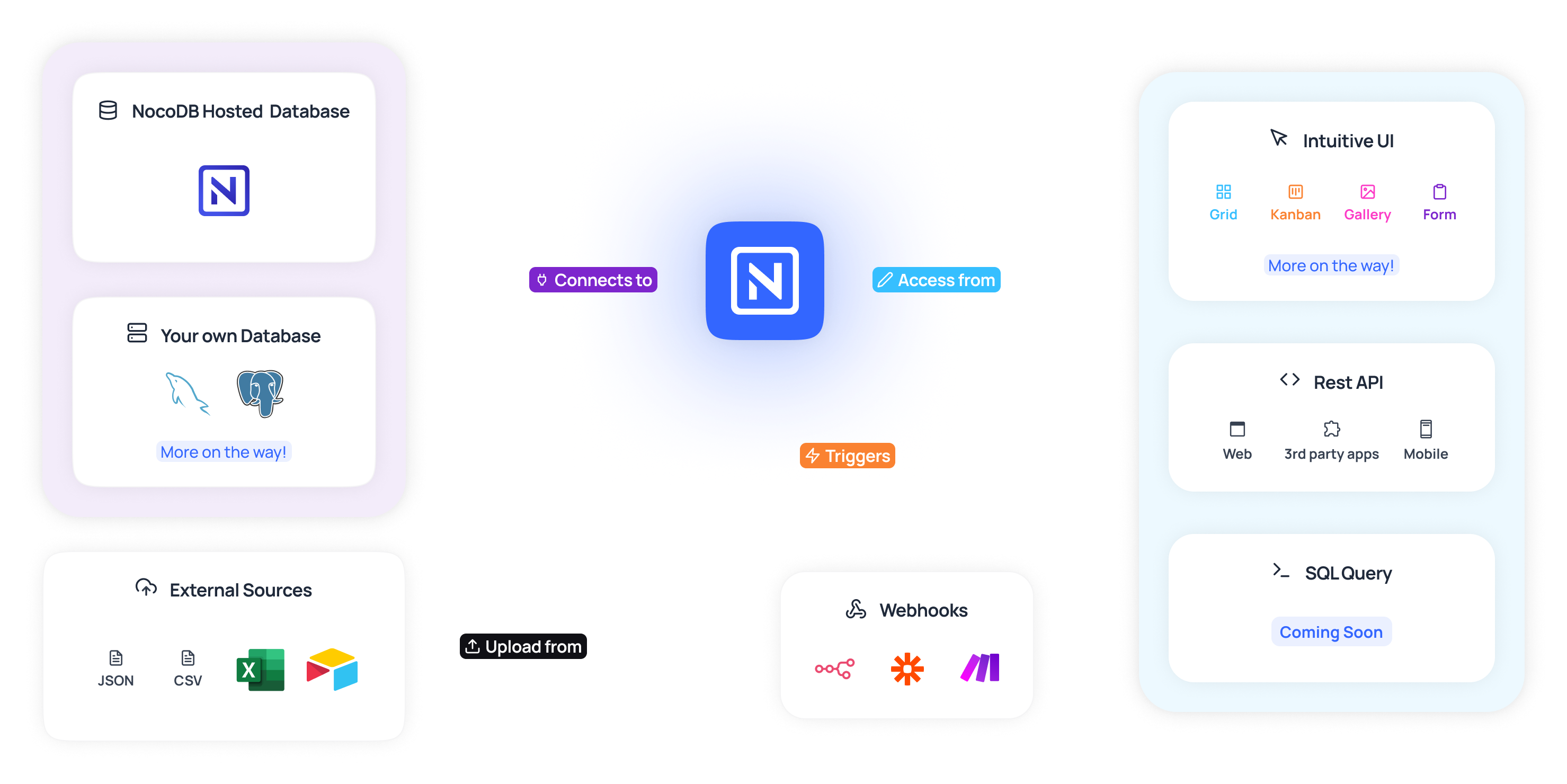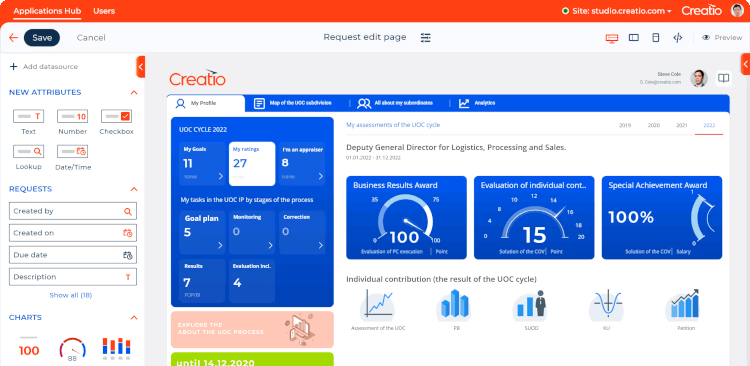Exactly How No-Code Devices Simplify Open Platform Data Source Development for Everybody
Exactly How No-Code Devices Simplify Open Platform Data Source Development for Everybody
Blog Article
Discovering the Benefits of Scalable Data Sources That Require No Coding Skills for Effective Information Management Solutions
The emergence of scalable data sources that remove the necessity for coding abilities offers a transformative opportunity for organizations seeking reliable data management remedies. As we take into consideration the ramifications of such advancements, it comes to be important to analyze how they can improve the landscape of data management and drive lasting growth in an affordable setting.
Enhanced Access for Customers
Enhanced access for users is an essential aspect of scalable data sources, making sure that data management systems are user-friendly and straightforward. In an age where data-driven choices are critical, accessibility permits a bigger range of customers, consisting of those without substantial technical expertise, to involve with database systems properly. This democratization of data access facilitates improved partnership throughout departments, encouraging employees to make and remove insights notified decisions.
Straightforward interfaces, such as drag-and-drop attributes and visual information representation, streamline intricate information interactions. These improvements reduce the knowing contour associated with standard database administration, making it possible for users to concentrate on leveraging information as opposed to grappling with technological intricacies. Furthermore, scalable databases typically integrate real-time analytics and adjustable dashboards, providing customers with immediate understandings tailored to their certain needs.

Cost-Effectiveness and Resource Savings
Efficient data management not just rests on ease of access but additionally on cost-effectiveness and resource cost savings. Scalable data sources developed for customers without any coding abilities dramatically reduce monetary burdens usually connected with traditional database monitoring systems. By eliminating the demand for specialized programming competence, organizations can assign their resources much more successfully, focusing funds on core organization activities as opposed to substantial training or hiring proficient employees.
In addition, these databases typically utilize cloud-based services, which further minimize costs connected to equipment and maintenance. Organizations can scale their database solutions according to their demands, avoiding the costs sustained from over-provisioning resources. This versatility implies organizations can adapt to transforming needs without incurring unneeded costs, resulting in significant lasting financial savings.
Furthermore, straightforward user interfaces improve information access and management processes, lowering the time spent on administrative jobs. This efficiency translates into labor cost financial savings, permitting groups to focus on strategic campaigns rather than regular upkeep. Generally, embracing scalable data sources that call for no coding abilities fosters a much more cost-efficient technique to data monitoring, allowing organizations to optimize their sources while maintaining high degrees of operational efficiency.
Improved Partnership Throughout Teams

In addition, scalable data sources facilitate seamless communication amongst group members. With user-friendly interfaces that require no view coding skills, workers can easily develop, modify, and share records or control panels customized to their details demands. This democratization of information equips non-technical users to add insights, improving the joint environment.
Additionally, these data sources sustain simultaneous accessibility, permitting numerous individuals to work with the exact same dataset at the same time. This feature improves efficiency, as groups can take part in joint information evaluation without the danger of version control issues. The ability to leave notes or remarks directly within the database additionally advertises dialogue and makes clear information interpretations.
Streamlined Data Monitoring Processes
In today's data-driven environment, companies identify the requirement of streamlined data monitoring processes to make the most of effectiveness and accuracy. By leveraging scalable data sources that require no coding abilities, businesses can simplify their data handling and minimize the complexities usually connected with traditional database systems. This ease of access equips non-technical customers to involve straight with data, assisting in quicker decision-making and minimizing dependence on specialized IT employees.
Streamlined information administration procedures boost operations by automating routine tasks such as information entrance, validation, and coverage. Automated data integration ensures that details from different sources is accumulated perfectly, removing silos and cultivating a merged sight of essential organization metrics (no-code). Furthermore, straightforward user interfaces enable employees to adjust data easily, enabling them to produce insights that drive tactical campaigns without the demand for substantial training.
This performance not only accelerates operational procedures but additionally minimizes the potential for human mistake, making sure that data continues to be trustworthy and precise. Eventually, structured data management processes with scalable databases lead to enhanced efficiency, permitting organizations to concentrate on core tasks while making sure that their data monitoring practices are effective and reliable.
Scalability for Expanding Services

For broadening business, the capability to scale up or down is vital. A scalable database can deal with an increase of data created from new consumers, products, or services, making sure that organization procedures continue to be nonstop. Furthermore, these data sources provide the capacity to manage peak lots effectively, which is necessary during periods of rapid growth or seasonal spikes.
In addition, numerous scalable database remedies are designed with easy to use interfaces that call for no i loved this coding abilities, encouraging non-technical personnel to take care of data effectively (no-code). This democratization of information administration enables organizations to allot sources tactically and decrease dependency on specialized IT employees
Eventually, embracing a scalable data source not only boosts operational efficiency yet additionally promotes an environment where services can introduce and develop without the restrictions of conventional database systems. This flexibility settings organizations for long-lasting success in today's affordable landscape.
Verdict
In conclusion, scalable databases that need no coding abilities supply considerable advantages for effective data monitoring. By improving data monitoring processes and providing scalability for growing companies, such solutions enable organizations to adjust to link transforming demands effectively.
Enhanced accessibility for users is a vital element of scalable databases, making sure that data monitoring systems are user-friendly and user-friendly.User-friendly user interfaces, such as drag-and-drop features and visual data representation, streamline complex information communications. Overall, adopting scalable data sources that need no coding abilities fosters a more affordable method to data monitoring, making it possible for companies to optimize their sources while maintaining high levels of operational effectiveness.
By leveraging scalable data sources that need no coding abilities, organizations can streamline their data handling and lower the intricacies commonly associated with typical database systems - no-code.Structured data management processes improve workflow by automating regular tasks such as data entrance, validation, and reporting
Report this page